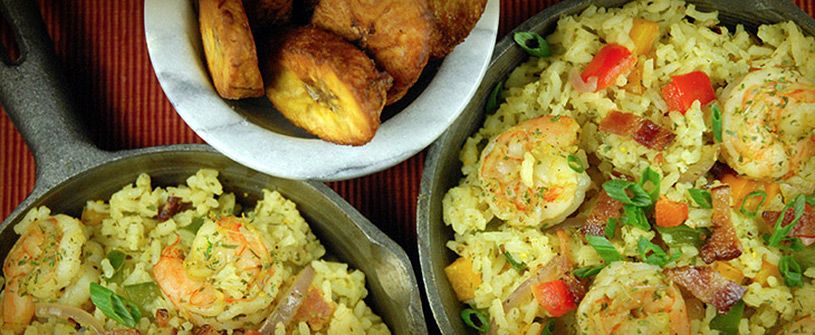Cajun
The word Cajun came from the abbreviated form of Acadian. French colonists who had settled in Nova Scotia were driven out by the British in what came to be known as The Great Upheaval. These Acadians traveled the East Coast of the United States, with many eventually settling in what is today southern Louisiana. At the time, that portion of the continent was under Spanish rule.

Map of the Louisiana Purchase Territory, 1803
French culinary traditions are integral to Cajun cuisine. These immigrants brought their traditional approach to a new landscape and climate. And the landscape influenced the ingredients that were available, including pork, chicken, sausage, corn, rice, and vegetables that could easily be grown locally. Cajun food tends to have a “rustic” or “country” approach, dictated by the land. Cajun stews use a roux of lard or animal fat, giving a more intense flavor, as this was more readily available than butter from cow’s milk.
The French influence can be seen in a few key elements of Cajun cuisine: the prevalence of “nose-to-tail” cooking; the trinity (bell peppers, celery, and onion) derived from mirepoix; and the spices shared with French and Spanish dishes. Cajun food, over generations, became a heavily spiced and very flavor-rich cuisine. Paprika, parsley, garlic, thyme, pepper, gumbo file (powdered sassafrass), salt, and cayenne are the dominant spices in Cajun dishes. While many people mistakenly identify Cajun as just being spicy, the flavor is, first and foremost, richly seasoned and very savory. Our version of red jambalaya is enhanced with Cajun Blackening Seasoning to add a warm Louisiana flair to the perfectly crisped rice.

Our Cajun Style Blackening Seasoning is blended with classic Cajun flavors of paprika, onion, salt, garlic, pepper, thyme, and cayenne. We add accents of bell pepper and celery seed, and round out the flavor with a few other ingredients. We have a salt-free version too, so there is something for everyone. Don’t let the name fool you, it can be used in everything from Party Mix or cheese crackers to traditional fish bakes. When looking for ways to add Cajun flavor to your repertoire, think about any dish in which you would use garlic and cayenne. You can easily add it to stews and sauces, or even in barbeque, for a uniquely American twist. Try a pinch when making a Bloody Mary, for a slightly spicy drink.
Creole
Creole is an amalgamation of many types of ingredients, cuisines, and people. While Creole originally referred to European settlers and their descendants, most of whom were affluent and from metropolitan areas, bringing chefs with them. These European chefs were forced to contend with new ingredients and create substitutions for ingredients that weren’t available locally. From the Native Americans, they learned to identify and use new ingredients in traditionally inspired dishes.

The European roots of some Creole dishes are easy to see. Remoulade, a classic French sauce, takes a Louisiana spin when you add tomato or paprika, mustard, horseradish, and hot sauce. This well-seasoned sauce is a great condiment for shrimp, or almost any other type of seafood, and is usually found on po’boy sandwiches. Our recipe for Remoulade Slaw gives a nod to both the French (with mayonnaise and Dijon) and to Louisiana (with generous seasoning and a dash of Hot Sauce).
Creole cuisine also marries European roots with Caribbean and African traditions. The chile heat associated with Creole cuisine comes from the Spanish and Portuguese influences. The use of tomatoes and garlic can be attributed to Italians.
Cajun and Creole cuisine have distinct but shared histories. In the present age of fusion cuisine, it’s likely that they will continue to come together, perhaps forming a uniquely identifiable Louisiana cuisine. In the meantime, take a cue from Cajun tradition and use the ingredients you have on hand for a new twist on a favorite dish, or find yourself inspired by Creole cuisine and incorporate new seasonings and flavors to change up a traditional meal - add them to comfort food classics like Creole Mac & Cheese Squares, Queen City Pimento Cheese, or Baked Fried Green Tomatoes.

